
The City of London, also known as the City, is a city, ceremonial county and local government district that contains the ancient centre, and constitutes, along with Canary Wharf, the primary central business district (CBD) of London and one of the leading financial centres of the world. It constituted most of London from its settlement by the Romans in the 1st century AD to the Middle Ages, but the modern area referred to as London has since grown far beyond the City of London boundary. The City is now only a small part of the metropolis of Greater London, though it remains a notable part of central London. The City of London is not one of the London boroughs, a status reserved for the other 32 districts. It is also a separate ceremonial county, being an enclave surrounded by the ceremonial county of Greater London, and is the smallest ceremonial county in England.

Clerkenwell is an area of central London, England.

Sir John Betjeman, was an English poet, writer, and broadcaster. He was Poet Laureate from 1972 until his death. He was a founding member of The Victorian Society and a passionate defender of Victorian architecture, helping to save St Pancras railway station from demolition. He began his career as a journalist and ended it as one of the most popular British Poets Laureate and a much-loved figure on British television.

Smithfield, properly known as West Smithfield, is a district located in Central London, part of Farringdon Without, the most westerly ward of the City of London, England.

The Worshipful Company of Haberdashers, one of the Great Twelve City Livery Companies, is an ancient merchant guild of London associated with the silk and velvet trades.

Barbican is a London Underground station situated near the Barbican Estate, on the edge of the ward of Farringdon Within, in the City of London in Central London. It has been known by various names since its opening in 1865, mostly in reference to the neighbouring ward of Aldersgate.
Farringdon is an area in the London Borough of Islington, situated immediately north of its border with the City of London. The term is used to describe the area around Farringdon station.
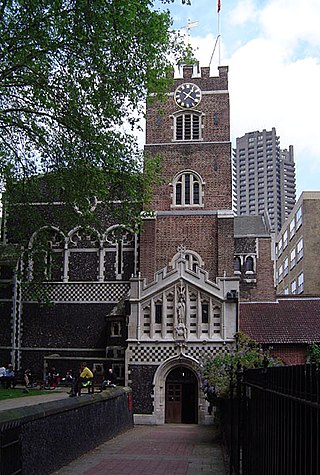
The Priory Church of St Bartholomew the Great, sometimes abbreviated to St-Barts-the-Great, is a mediaeval church in the Church of England's Diocese of London located in Smithfield within the City of London. The building was founded as an Augustinian priory in 1123. It adjoins St Bartholomew's Hospital of the same foundation.
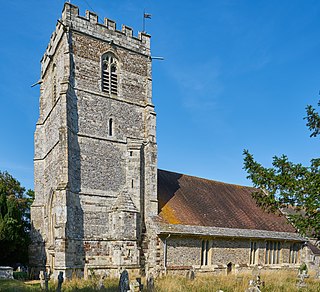
Cranborne is a village in East Dorset, England. At the 2011 census, the parish had a population of 779, remaining unchanged from 2001.

St Bartholomew the Less is an Anglican church in the City of London, associated with St Bartholomew's Hospital, within whose precincts it stands. Once a parish church, it has, since 1 June 2015, been a chapel of ease in the parish of St Bartholomew the Great.
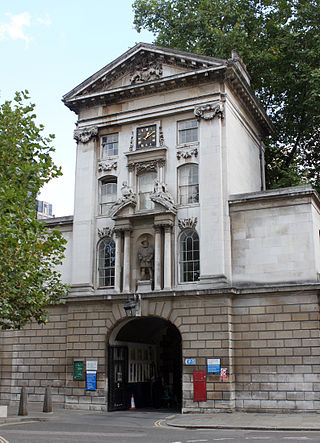
St Bartholomew's Hospital, commonly known as Barts, is a teaching hospital located in the City of London. It was founded in 1123 by Rahere, and is currently run by Barts Health NHS Trust.

St Luke's is an area in London, England and is located in the London Borough of Islington. It lies just north of the border with the City of London near the Barbican Estate, and the Clerkenwell and Shoreditch areas.

Farringdon Without is the most westerly ward of the City of London, England. Its suffix Without reflects its origin as lying beyond the City's former defensive walls. It was first established in 1394 to administer the suburbs west of Ludgate and Newgate, including West Smithfield and Temple. This was achieved by splitting the very large, pre-existing Farringdon Ward into two parts, Farringdon Within and Farringdon Without. The large and prosperous extramural suburb of Farringdon Without has been described as having been London's first West End.

Charterhouse Square is a garden square, a pentagonal space, in Farringdon, in the London Borough of Islington, and close to the former Smithfield Meat Market. The square is the largest courtyard or yard associated with the London Charterhouse, mostly formed of Tudor and Stuart architecture restored after the London Blitz. The square adjoins other buildings including a small school. It lies between Charterhouse Street, Carthusian Street and the main Charterhouse complex of buildings south of Clerkenwell Road. The complex includes a Chapel, Tudor Great Hall, Great Chamber, the Barts and The London School of Medicine and Dentistry and a 40-resident almshouse.
St Catherine's is an inner-city area of Lincoln in Lincolnshire, England at the southern end of the High Street, and centred on a roundabout at its junction with the A15, B1190 and South Park Avenue. The area is bordered by South Common in the east and the River Witham in the west. It is built over the site of the 12th century Priory of Saint Katherine without Lincoln, a monastic community that ran the Hospital of Saint Sepulchre.
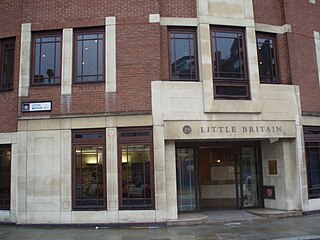
Little Britain is a street in the City of London running from St. Martin's Le Grand in the east to West Smithfield in the west. It is situated in the Aldersgate and Farringdon Within wards. Postman's Park is also bounded by Little Britain.

Castle Baynard is one of the 25 wards of the City of London, the historic and financial centre of London, England.
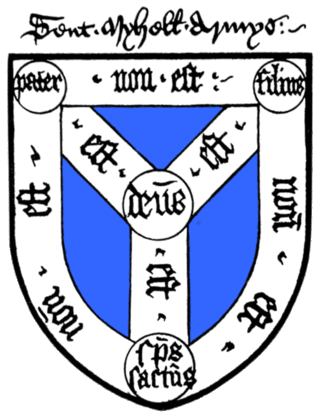
The Holy Trinity Priory, also known as Christchurch Aldgate, was a priory of Austin canons founded around 1108 by the English queen Matilda of Scotland near Aldgate in London.

The Bartholomew Fair was one of London's pre-eminent summer charter fairs. A charter for the fair was granted by King Henry I to fund the Priory of St Bartholomew in 1133. It took place each year on 24 August within the precincts of the Priory at West Smithfield, London until 1855 when it was banned due to causing public disturbances.


















